


A world of too much sound
A Floyd Fan's Introduction to Ron Geesin
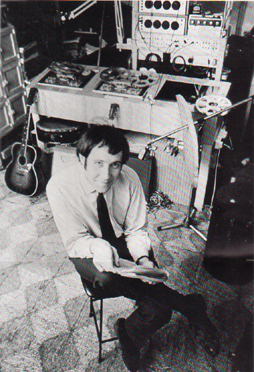 Ron Geesin. |
If you run across someone who has heard of Ron Geesin at all, chances are good that it is because of his association with Pink Floyd. He composed the orchestral score for the "Atom Heart Mother" suite, based upon the chords and structure of the music Pink Floyd had already refined and recorded. He wasn't terribly happy with the results, by all accounts, and neither were the Floyds. (Some fans don't seem to be too thrilled with it either, judging from the way many prefer the live versions of "Atom Heart Mother" featuring the Floyd sans orchestra and choir. Of course, much of this may be due to the out-of-tune playing of some of these orchestras.)
If you've dug any deeper into the Floyd-Geesin connection, it is probably to hear the Music from The Body album, Roger Waters' first attempt at solo work. Waters wrote four songs (three featuring the same melody with different lyrics), and co-wrote a few other tracks with Geesin. But the rest of the album is basically a Ron Geesin solo album. As such, this is perhaps the best possible introduction to Geesin's music--if you despise the non-Waters music on The Body (and I know many of you do), chances are good that you won't enjoy exploring his work further. But if you find his particular brand of offbeat madness and mayhem to be intriguing, then you might find some of his other recordings to your liking.
Like the Floyd, Geesin has gone through many phases through his career, such that no two albums are really terribly similar. He is a musical explorer and experimenter, playing with sound independent of its 'musicality', and deliberately turning genres on their ear. He started out as a harmonica and banjo player at a young age, and from there developed an interest in traditional jazz. His first 'professional' musical experience was in the early and mid-1960s, in a jazz band called the Original Downtown Syncopators. They issued a couple of albums and an EP, and made it onto at least one jazz compilation. But these early recordings were very limited releases, and are virtually impossible to find, which is a shame. I really like some of his jazz-flavored work later on, and I'd certainly like to hear these recordings.
His website also mentions a similarly-limited release (numbering 100 copies) of a solo piano recording, improvised and recorded on the spot in 1965 at a London nightclub. The record sleeve is described as 'handmade by Geesin'. Needless to say, 'virtually impossible to find' doesn't even begin to describe the rarity of such an item.
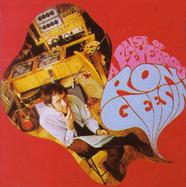 A Raise of Eyebrows (1967) |
His next solo outing was an LP called A Raise of Eyebrows. This 1967 record would also be impossible to find if it hadn't been released on CD in 1995, paired with an 1973 album called As He Stands. A Raise of Eyebrows is sure to interest anyone who enjoys the Music from The Body soundtrack. From the title track's montage of smashing glass and nonsense gibbering over television announcements, to the ragtime-influenced dixieland jazz of "Freedom for Four Voices and Me" and "Certainly Random" (performed on piano, banjo, and other assorted instruments), this record is at times very similar to The Body tracks such as "Our Song".
Also featured is some of Geesin's poetry, which is usually brief and always humorous. Sometimes these poems are performed alone, and at other times they are worked into the music. Two such tracks are of particular interest to the Pink Floyd fan. First is a track called "Psychedelia", in which Geesin describes the performance (and audience) at a rock concert, a la UFO or the Marquee Club. Geesin was very much a part of London's art and music community at the time, although he admits to being more or less detached from the rock scene. But he performed at the 14-Hour Technicolour Dream at the Alexandra Palace in 1967, and was thus aware of these kinds of events.
Geesin's comic style is in full force on "Psychedelia", with verses such as:
With the odd blast on the organ
The light refreshment enclosure empties
And the dancing enclosure fills up
Just like the bubbles on the screen
Which move from one bit to the other
But don't really get very far.
and
The spotted lights spot the people
But do the people spot the lights?
The other tune of interest to the Floyd fan is called "A World of Too Much Sound", which features some interesting guitar work and a poem about the noise produced by an "electric beating group", whose music "makes my bones vibrate" and "vibrates my brain". This unflattering depiction of the pop music scene (and its unending quest for louder and more powerful amplifiers) was probably influenced by Geesin's friendship with The Who's Pete Townshend (who helped finance the album) more than any awareness of The Pink Floyd. But it certainly demonstrates that he was not a big fan of the scene in which the Floyd came to public prominence.
Geesin would later record an organ-and-flute piece for Townshend's tribute to the Indian guru Meher Baba (known among Who fans as the 'Baba' in "Baba O'Riley"), called Happy Birthday. Geesin's contribution to the record is titled (in classic Geesin style) "With a Smile Up His Nose, They Entered". Sadly, the best thing about the tune is the title; the music itself is shapeless and dull. But it does vaguely remind me of some of the free-flowing parts of the Floyd's "Atom Heart Mother" suite, especially the vamping organ around 16:00, and the trumpet fanfares just before the main theme (at around 1:20, and again at 19:00). That "With a Smile Up His Nose" was recorded around the same time as "Atom Heart Mother" could be pure coincidence, but it could also be a reflection of Geesin's compositional style at the time.
Geesin found himself doing a lot of incidental music for film, television, and radio during this period. It helped pay the bills, but he apparently found it a little stifling from an expressive point of view. Nonetheless, some of this music has been collected and released on various compilations over the years. Among the first of these were Electrosound (1972) and Electrosound, volume 2 (1975). Again, these fall into the 'virtually impossible to find' category, having been put out privately under license by Geesin in runs of about a thousand copies each. But they can be found through online record dealers and places like eBay from time to time, always priced to reflect their rarity.
Luckily, a few of the tracks have been included compilation albums, including one called Land of Mist (see below), which contains a total of five tracks from the Electrosound albums. But in my opinion, only tune is worth hearing. "Syncopot" (from Electrosound) is comprised of a distinctive shuffling beat accompanied by an assortment of echoing, popping electronic sounds. It is quite unlike most of Geesin's other compositions to date, lacking melody and relying heavily upon electronic sound manipulation, but it is quite catchy and interesting just the same. The other four tunes I've been able to hear from the Electrosound projects are similar experiments in electronica, but come off as dull, drab, and utterly unmusical.
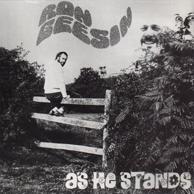 As He Stands (1973) |
1973's As He Stands has been released on CD coupled with A Raise of Eyebrows, as noted above. Viewed in its proper chronological context, it isn't too surprising that this album contains a lot of electronic sounds and synthesizers (whereas A Raise of Eyebrows was done entirely without electronic processing of any kind). Tracks like "A Cymbal and Much Electronics" and "On-Through-Out-Up" lean heavily upon the electronic processing of traditional instruments to create all-new sound colors. In contrast, "Twist and Knit for Two Guitars" and "Can't You Stop That Thing" could have come right off of A Raise of Eyebrows (or Music from The Body).
Interestingly, the tracks that combine both traditional and electronic elements are the ones that most resemble Pink Floyd. "Wrap a Keyboard Round a Plant" is a marriage of both styles, with his frantic jazz piano rumblings giving way to heavily-processed banjos that roar and twang like the middle passage of "Echoes". And the minimalist, delay-riddled organ riffs of "Concrete Line Up" are strongly reminiscent the synthesizer experiments that eventually became "On the Run", as heard on the Floyd's Live at Pompeii film.
Patruns (1975) and Right Through (1977) are not available for review, but song titles such as "Hiding Haul Of Voices, Hail!" and "Eb Minor, Lie Down Still!" show that Geesin's offbeat sense of humor was in full force. "Smoked Hips" (from Patruns) is a rhythmically-complex composition for solo piano that listeners will either find fascinating or dull, depending on your frame of mind. Right Through is now available on CD through Geesin's Headscope Records website, and if "Throb Thencewards Thrill" (found on the Hystery compilation--see below) is any indication, the music is an engaging combination of electronic and acoustic compositions similar to As He Stands.
1977's Atmospheres is another privately-released soundtrack project, a la Electrosound, and the tracks ("Morning Sundew and "Solar Flares") included on the Land of Mist compilation as very much in that vein: dull, slow, and experimental. They are background music, and as such they don't seem to hold up well on their own merits.
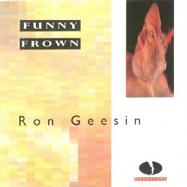 Funny Frown (1991) |
Funny Frown (1991) is purported to be a collection of Geesin's best recordings from 1980 through 1990, all previously unissued. My opinion is that if this represents his best work of the period, it wasn't a great period. Geesin has largely abandoned the style of his earliest compositions in favor of synth-heavy, repetitive, unmelodic soundscapes such as "Mad Kite" and "Go!". The return to familiar ground--such as the ragtime of "Piano Prance" or "Whistling Heart"--is made dull and lifeless by the synthesized accompaniment and electronic embellishments.
A few tracks, however, are worth noting. "Ample Sample" is a highly-rhythmic track which Geesin describes in the liner notes as "an exercise in composing with non-musical instruments: milkchurns, circular saw, model plane, wind, carhorns, doorlocks, doorslams and footsteps." Although this description suggests the Floyd's abandoned Household Objects project, the final result is much more akin to the "Work" section of The Man and The Journey suite, and similar rhythmic experiments the Floyds were performing onstage as early as 1967. And "Ron's Tune" is a nice bit of 1930s style jazz, with some lovely sax work by John Davies, vaguely reminiscent of the gentle flow of "San Tropez".
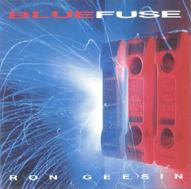 Bluefuse (1993) |
Blue Fuse marked a return to form for Geesin. For starters, it is almost entirely enjoyable music, light on the electronic experiments and heavy on the jazz and blues influences. In fact, the entire album is a celebration and exploration of the blues form. The centerpiece of the album is twelve very different takes on the basic 12-bar blues form, in twelve different keys.
From the very traditional sound of songs like "Whinebar" and "Barfly", to the unusual voicings and harmonies of songs like "Handlebar" and "Cellbar", Geesin proves that there is room for experimentation in any musical form. It works, and is good fun, but very little of it is remotely Floydian. "Healbar", however, has some distinctly Floydian touches, such as the footsteps that echo around the stereo spectrum and are used in place of drums.
Bluefuse is one of the few albums Geesin has released in the last 25 years that seems to have been conceived as a unit, rather than as a hodgepodge of tunes composed for other foramts (soundtracks, etc.). It also seems to have been the last such album Geesin has released. Hystery (1994) is presented as a career retrospective, a 'best-of' album, if you will. But more than half of the 28 tracks were previously unreleased, which makes you wonder if he was simply looking for an outlet for some of the older tracks (some dating as far back as 1968).
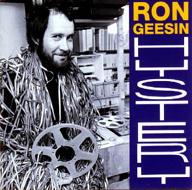 Hystery (1994) |
The songs are presented in non-chronological order, but do represent most of Geesin's albums along the way. The new tracks range from "Throat Sweat", a collage of audience coughs that would fit right in with Music from The Body, to "Mental Passage", a track of rhythmic chain rattling and door slamming, which is reminiscent of the opening tape loop from "Money". It should be mentioned that such tape processing was a prominent feature of Geesin's earliest work, as heard on A Raise of Eyebrows and Music from The Body. While the Floyds were interested in such techniques prior to their involvement with Geesin (for proof, see the ending of "Bike"), there is little doubt that Waters learned a lot about the tape manipulation from working with Geesin.
Many of the remaining new tracks on Hystery are bits of incidental electronic music from various television, radio, and film projects from the '70s and '80s, as well as pieces that were (according to the liner notes) recorded to test the capabilities of various new pieces of equipment over the years. Most are melodic enough, and tend to showcase Geesin's abilities as a composer and arranger, rather than as an experimenter.
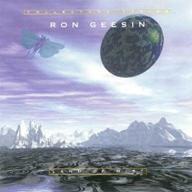 Land of Mist (1995) |
Land of Mist is a 1995 compilation of Geesin's electronic and ambient compositions, and, frankly is not terribly representative of his work. In fact, I find most of the album unlistenable and dull. A lot of it comes across as the soundtrack to a cheap science fiction movie. Many of the tracks lack melody and focus, and the few that do start out with something interesting never seem to go anywhere.
One track from Land of Mist is of special interest to the Floyd fan. "To Roger Waters Wherever You Are" is originally found on As He Stands, but I mention it here because it is one of the few compositions on Land of Mist that I can stand to listen to more than about twice. It features a vocal by Geesin, which provides a point of focus that many of the other tunes desperately need. Geesin, in his native Scottish brogue, rambles a bit about trying to start a fire to keep warm, and then is overwhelmed by howling wind and "83 electronic bagpipes".
I have read again and again that "To Roger Waters" was recorded as a parody of (or a tribute to) the Floyd's "Several Species of Small Furry Animals Gathered Together in a Cave and Grooving With a Pict". Although "Several Species" features Waters ranting in a thick Scottish brogue (like Geesin, Waters is the product of a Scottish mother and an English father), the similarities between the tunes end there. If Waters had not been named in the title, there would be no reason to hunt for a Floyd connection in this track any more than in any of the other Geesin's vocal tracks. And Geesin has refuted any connection between the songs as recently as 2000.
So where should the Floyd fan begin to explore Ron Geesin's work? Start with Music from The Body. Even if you don't like Geesin's quirky style, you will at least have four lovely Roger Waters songs (including the rest of Pink Floyd backing him on "Give Birth to a Smile").
If you can't stand Geesin's work on Music from the Body, you might not want to go any further. Although he has explored many musical styles, his basic interest in jazz, ragtime, classical, European folk music, and humor (all abundant on The Body) pervades almost everything else he has done. If Music from The Body leaves you yearning for more (as it did me), I would hunt down a copy of the CD release of A Raise of Eyebrows and As He Stands. Hystery is another nice second step, giving a sampling of Geesin's work over nearly 30 years, as well as providing a glimpse of some of those 'impossible to find' releases from the early- and mid-70s.